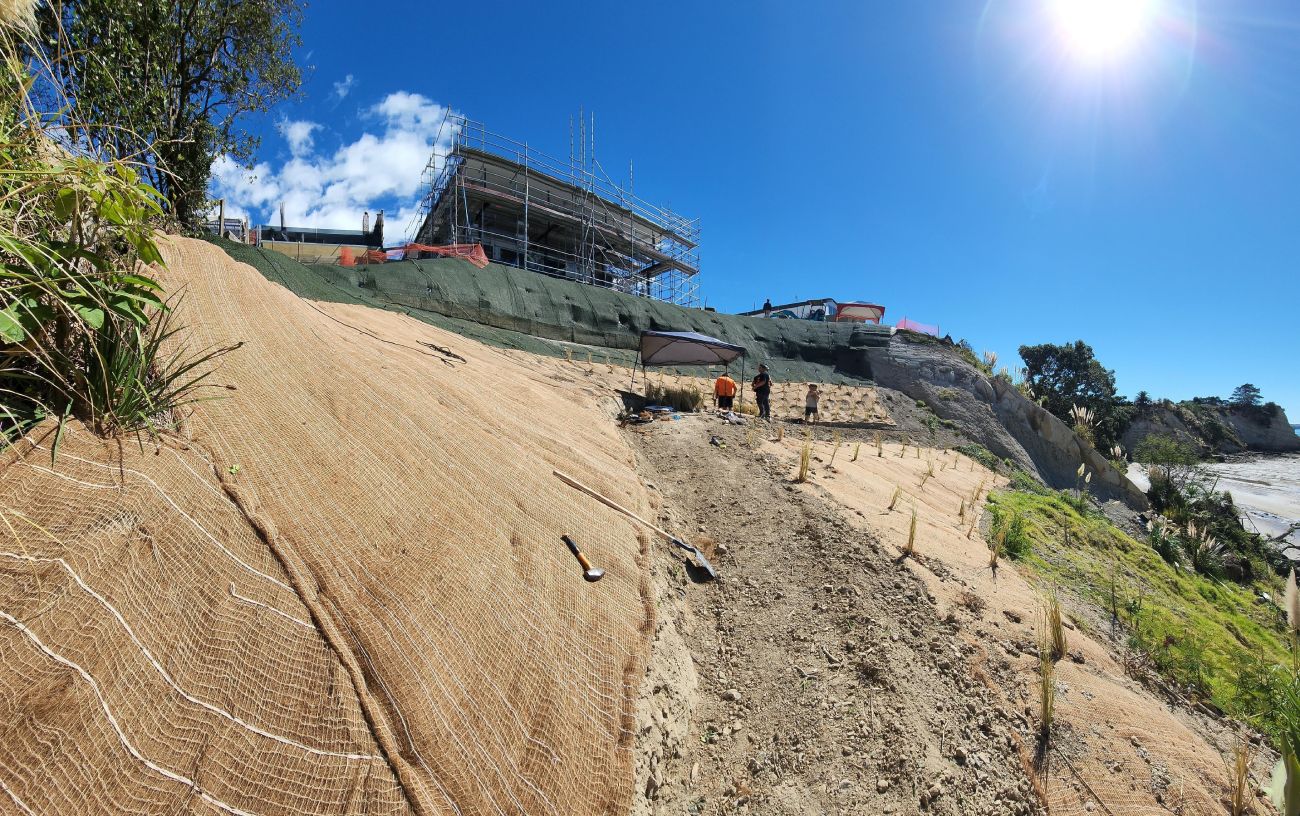Slip/Cliff repair
We specialise in slip and cliff-face stabilisation and our expert teams can identify both the cause, and ways to repair and secure unstable slopes.
Ever since the very heavy 500mm rain dump in 2011 in the Naper area which resulted in multiple landslides on Napier Hill, CLL have been training more and more rope access crews to stabilise landslips using various techniques.
The CLL crews have been called on to remove dangerous debris overhanging residential and commercial areas.
We have developed and purchased several unique rope access portable drill rigs which may be carried into inaccessible places, then utilised to drill, place and grout soil nails and soil anchors.
The rope access crews are skilled at placing various types of rockfall mesh, plant matrix geotextiles and plants, having developed some innovation planting techniques over difficult terrain.
Our slip repair process is an integrated service from design and costing, consents, construction, and reinstatement of landscape.
CLL’s development of innovative techniques used in previous projects enables us to offer cost effective solutions at the design stage – streamlining and reducing the cost of repairs.
Our expertise also includes rapid-response teams for emergency situations. In these distressing conditions our depth and breadth of skills and technology allows us to quickly assess and respond to the specific needs of each situation.
“There’s multiple ways to stabilise a slip. An option is to improve the cohesion of the ground with soil nails, others include installation of walls – timber, a palisade, or a secant for example. What we’re asked to do is accept the challenge, providing an opportunity to rise to the cause, when its beyond our competitors capabilities.
“We specialise in difficult access projects and have a division within CLL specifically for these projects. Another aspect we offer is replanting and creating new vegetation on what we’ve stabilised. We create custom planting and designs including, making planting pockets, particularly in hard to grow areas such as sandstone.
“We particularly like planting natives which are more inclined to grow in these environments.”
— Jonny Walker

